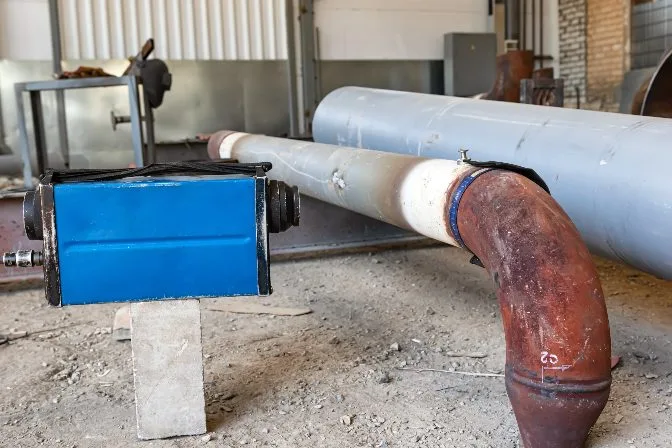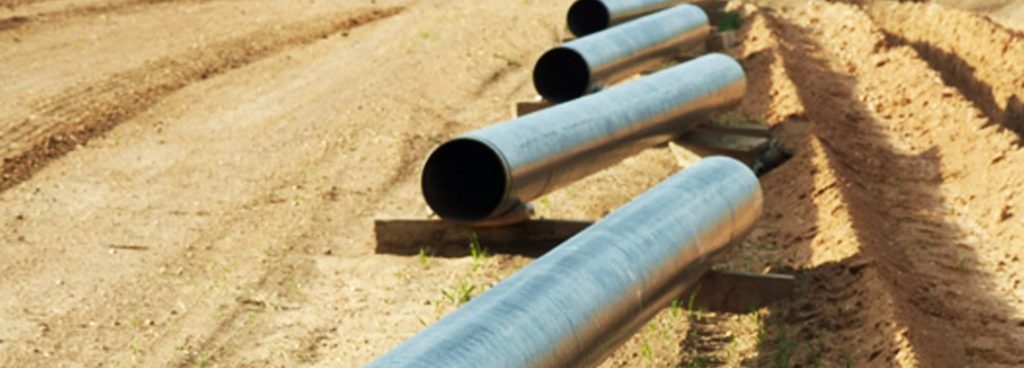Comprehensive Guide to Pipe Welding Inspection: Making Sure Stability and Safety And Security in Pipeline Building And Construction and Maintenance
The stability and safety of pipelines are paramount in today's infrastructure landscape, emphasizing the crucial function of welding inspection in pipeline building and construction and upkeep. Pipeline Welding Inspection. The complexities included in welding evaluation raising relevant inquiries concerning sector criteria and the developing modern technologies that might redefine these practices.

Relevance of Welding Examination
Welding assessment plays a crucial duty in making sure the integrity and safety and security of pipe systems. It functions as an essential process that confirms the top quality and integrity of welded joints, which are typically the most susceptible factors in pipeline building. Via organized assessment, examiners can recognize potential flaws such as fractures, porosity, and incomplete blend, which might compromise the architectural integrity of the pipe.
The relevance of welding assessment expands past plain conformity with market standards; it likewise safeguards public wellness and the environment. Comprehensive evaluations can improve the durability of pipeline systems, decreasing the need for expensive repairs and downtime.
In addition to making sure safety and security and compliance, welding assessment promotes a society of quality control within organizations. By focusing on assessment throughout the welding process, firms can construct a track record for dependability and quality, inevitably leading to enhanced customer self-confidence and business possibilities (Pipeline Welding Inspection). Therefore, the relevance of welding inspection can not be overemphasized in the context of pipeline building and construction and upkeep
Key Welding Procedures
Numerous welding processes are utilized in pipe building, each with its own advantages and applications. Among one of the most extensively made use of approaches are Secured Steel Arc Welding (SMAW), Gas Tungsten Arc Welding (GTAW), and Gas Metal Arc Welding (GMAW) SMAW is favored for its flexibility and ability to carry out well in various environmental conditions, making it ideal for area applications.
GTAW, often referred to as Tungsten Inert Gas (TIG) welding, is identified for its capacity to generate high-grade welds with superb control over warmth input, making it suitable for thin-walled pipelines and stainless steel materials. GMAW, or Steel Inert Gas (MIG) welding, supplies high deposition rates and is efficient for large jobs, typically utilized in the manufacture of pipes in controlled environments.
Additionally, Submerged Arc Welding (SAW) is made use of for its deep penetration and high productivity, particularly in the construction of large-diameter pipelines. Each of these procedures adds to the overall honesty and safety of pipe constructions, allowing welders to pick one of the most appropriate method based on product kind, project needs, and ecological problems. Recognizing these vital welding procedures is crucial for efficient pipe welding examination.
Usual Issues and Their Effect

Porosity, identified by tiny gas pockets caught within the weld, deteriorates the material and can cause leakages. Cracks, which might occur due to thermal stress and anxieties or inappropriate cooling, can result and circulate in structural failing under pressure. Damaging, where the base metal is worn down along the weld grain, reduces the reliable cross-section of the pipe, enhancing the risk of crack.
Insufficient fusion occurs when the weld steel does not correctly bond with the base metal, causing weak locations that may stop working under stress and anxiety. Slag addition, the entrapment of non-metallic material within the weld, can additionally weaken the joint's stability. Determining and attending to these defects early in the building procedure is critical to ensuring the long-term integrity and safety and security of pipe systems, thus protecting both the environment and the facilities.
Inspection Strategies and Devices

Aesthetic inspection is the first line of protection, permitting inspectors to identify surface area abnormalities, misalignment, or other visible problems. Ultrasonic testing employs high-frequency acoustic waves to find inner flaws, offering exact depth dimensions and defining defects without damaging the weld. Radiographic testing utilizes X-rays or gamma rays to produce photos of the weld, enabling the recognition of interior spaces, fractures, or incorporations.
Magnetic particle screening is especially reliable for discovering surface and near-surface discontinuities in ferromagnetic materials. This strategy includes applying an electromagnetic field and fine iron bits to the weld, revealing defects through the build-up of fragments at flaw sites.
Along with these methods, specialized devices such as automated ultrasonic testing equipment and electronic radiography systems enhance examination precision and performance, guaranteeing a detailed evaluation of pipe welds throughout building and construction and maintenance.
Finest Practices for Compliance
Complying with ideal methods for conformity in pipeline welding assessment is important for guaranteeing the honesty and safety of the facilities. Organizations needs to develop a comprehensive top quality management system that aligns with sector criteria such as ASME, API, and AWS. This consists of developing comprehensive welding treatments that define the techniques, products, and certifications needed for welders.
Normal training and accreditation of evaluation workers are vital to preserve high competency levels. Inspectors ought to be familiar with various non-destructive testing (NDT) methods, consisting of ultrasonic testing, radiographic testing, and aesthetic assessment, to efficiently recognize possible problems.
Documents plays an important duty in compliance; maintaining accurate documents of examinations, weld procedures, and workers credentials aids to guarantee traceability and accountability. Scheduled audits and reviews pop over to these guys of welding methods need to be performed to identify areas for renovation and make certain adherence to established procedures.

Conclusion
Finally, the application of rigorous welding inspection methods is extremely important for making sure the honesty and security of pipe building and upkeep. By identifying problems and employing advanced examination techniques, organizations can dramatically improve the high quality of bonded joints. Abiding by ideal techniques cultivates compliance with industry criteria, ultimately guarding public health and wellness and preventing ecological hazards. Continuous enhancement in inspection processes will certainly add to the long life and dependability of pipe systems, highlighting the crucial role of welding evaluation in the market.
The honesty and safety of pipes are extremely important in today's framework landscape, underscoring the vital function of welding examination in pipe building and maintenance. Understanding these crucial welding procedures is necessary for reliable pipeline welding inspection.
Adhering to ideal techniques for compliance in pipeline welding assessment is critical for making certain the honesty and safety of the framework.In conclusion, the execution of extensive welding evaluation procedures is critical for guaranteeing the stability and safety and security of pipeline building and maintenance. Continual improvement in assessment procedures will certainly add to the longevity and integrity of pipeline systems, underscoring the crucial role More Info of welding evaluation in the market.